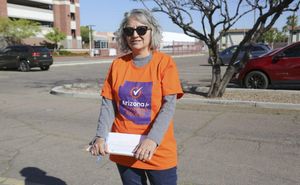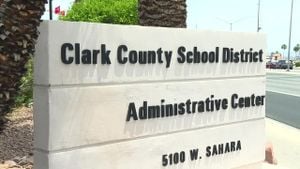Hurricane Milton made its grim entrance on the evening of October 9, 2024, as it struck Florida's west coast near Siesta Key, coming ashore as a Category 3 storm. Though the densely populated Tampa Bay area was spared from the worst, Milton unleashed chaos as it moved across the state, downing power lines, uprooting trees, and triggering deadly tornadoes.
Days after the storm, Florida residents found themselves caught between relief and despair. Many had just begun to recover from the devastation left by Hurricane Helene, which had battered the same regions just two weeks earlier. Governor Ron DeSantis urged Floridians to remain vigilant, emphasizing the dangers posed by downed power lines and flooded neighborhoods.
By Friday morning, reports indicated at least ten lives lost directly due to Milton, with fatalities linked to tornadoes and wind damage. Six of those who perished were victims of the tornado strike at the Spanish Lakes Country Club Village near Fort Pierce, where the storm's fury had ripped through the community without warning. The toll continued to rise as authorities assessed the scope of the devastation, with hundreds of rescues still being carried out, rescuing both people and animals stuck amid the rising waters.
One of the most heart-wrenching stories was the discovery of the body of 79-year-old woman found under fallen trees, and other instances of tragic loss scattered throughout the impacted areas. Among them was Bruce Kinsler, 68, who tragically lost his life when clearing debris from roads when he was hit by another vehicle. The chaotic aftermath of Milton elicited both sorrow for the casualties and reflections on how vulnerable Florida's communities are to the increasing frequency and severity of hurricanes.
Scientific assessments revealed troubling insights about the relationship between climate change and Milton's intensity. A study by World Weather Attribution suggested climate change intensified rainfall from Milton by 20% to 30% and strengthened its winds by roughly 10%. These findings underscored the changing dynamics of tropical storms, prompting conversations about the role of human activity in fueling such destructive weather events.
Milton's onslaught wasn’t just limited to wind and rain; it surprisingly kicked up tragedies but also uplifting moments as communities rallied together. Stories emerged showcasing bravery and resilience. For example, Laura and Basil Yorio from Palm Bay were shocked to discover Basil’s long-lost wedding ring, which had vanished nearly nine years ago during yard work, unexpectedly resurfaced on their property following the storm's passage. The couple reflected on the mix of emotions felt amid the destruction as they recounted their surprising reunion with the token of love.
While the storm wreaked havoc, it also reshaped the political scene on the verge of the upcoming election. Candidates found themselves diverted from their usual campaign trails to address the pressing recovery efforts following not just Milton but also Hurricane Helene. Vice President Kamala Harris and former President Donald Trump altered schedules to visit affected communities and articulate their plans to address the challenges posed by natural disaster recovery efforts.
Florida's major theme parks, including Walt Disney World and Universal Orlando, had to temporarily close their doors before re-opening shortly after. Orlando International Airport, which is one of the busiest airports nationwide, resumed full operations on Friday after ceasing flights as the storm approached.
Florida is still grappling with significant electrical outages—the number peaked at approximately 1.5 million households without power during the peak of the storm's impact. By Friday evening, more than 1.9 million customers had been restored, but the effort to bring everyone back online continued.
Across the area, authorities reported at least 19 tornadoes spawned during Milton's run, with one of the most notable being the EF-3 tornado observed near Clewiston with winds reaching up to 140 mph. This tornado's track length of over 70 miles was particularly extraordinary for storms of this nature.
Milton’s impacts were felt far and wide, raising questions about preparedness and climate resilience as Floridians faced recovery challenges. Local officials urged residents to assist each other and participate actively in community aid efforts, highlighting their dedication to rebuilding and supporting those most affected.
The stories woven from Hurricane Milton's aftermath are far from over, as Florida continues to navigate the repercussions of this storm. Yet, early resilience seen through stories of survival also sheds light on the human spirit’s unyielding capacity to find hope and connection even amid devastation. With the hurricane season still closed, experts are calling for increasing attention to the importance of disaster preparedness and the urgent need to address climate change's role permanently.



